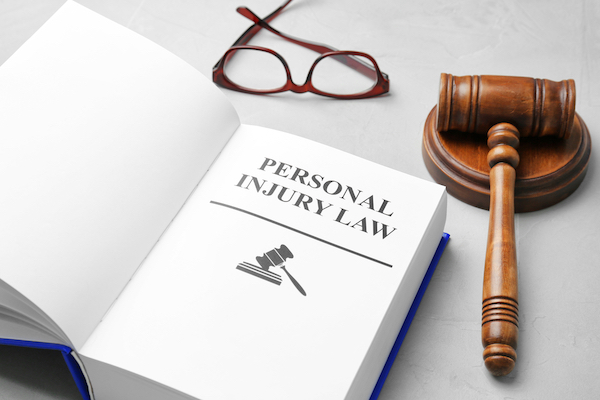Winning a Personal Injury Lawsuit: Everything You Need to Know

What is Personal Injury Law
Personal injury falls under a subsection of civil law known as tort law. Broken down simply, tort law is the part of the legal system which deals with rectifying a wrong that was done to a person by another person or an organization. The primary way through which this is done is by awarding monetary damages to the party who has been injured. Therefore, when one person is sued by another under a personal injury claim, the party doing the suing is attempting to be made whole for their injuries.4 Foundations for Proving Personal Injury
Learning how to win a personal injury lawsuit can be challenging, but understanding the basic foundation of this type of case is the best way to begin. The following four foundational points are the most important to remember and must be proved in order to win the case:1. Duty of Care
The first item that must be proved in court is that the party being sued had a duty of care to protect the individual who was injured. A common example which outlines duty of care is a driver behind the wheel. Every person who drives a motor vehicle has an inherent duty of care to keep themselves and others safe on the road by acting reasonably.2. Breach of Duty of Care
Second, the evidence in a person’s case must show that the party who had the duty of care also violated that duty of care through negligence. This means that the person acted in such a way that they showed a disregard for other’s around them in such a way that a reasonable person would not have made the same choice.3. Breach of Duty of Care Led to Injury
Third, the party who sues the defendant must also show that the defendant’s proven breach of their duty of care led to their injury. In the situation with an automobile driver, this could look like a person choosing to take their eyes off the road to go on their phone, only to run into a pedestrian.4. Extent of Injury Warrants Damages
Finally, it must be shown that the damages a person is suing for are just compared to the injuries that they suffered. For example, a person can’t sue another person for injuries they received after the fact which aren’t related to an accident the other person caused, which means they can’t claim they should be awarded damages for those injuries too.The Role of Assumption of Risk in Personal Injury
One of the primary steps in winning a personal injury trial, even with all of the above proven, requires navigating the principle of assumption of risk in personal injury law to ensure negligence was present. Outlining what exactly this principle is can make all the difference in your case.What is Assumption of Risk?
Assumption of risk is the inherent idea that when undertaking a particular task or activity, there is a reasonable level of risk that a person engages in. Being injured, assuming the injury results from this inherent risk, is less likely to result in a successful personal injury case. However, this doesn’t excuse a company from being liable in a certain situation, which is why organizations often have people sign waivers. However, assumption of risk doesn’t cover situations such as faulty equipment or an accident that could not be expected from a reasonable person about to engage in the activity.Two Main Types of Assumption of Risk
There are two primary types of assumption of risk that should be expected: express and implied. Express assumption of risk is the version outlined above with the signing of a waiver where potential risk of injury is outlined by an organization. On the other hand, implied assumption of risk doesn’t require a waiver, but is simply potential risk that a reasonable person should expect from the activity they are engaging in. For example, playing contact sports comes with the implied risk of being injured by another player.3 Types of Damages to Consider When Filing a Personal Injury Lawsuit
Determining what a person may be eligible for following a personal injury is important for determining which damages they may qualify for:1. Punitive Damages: The majority of damages are meant to make the plaintiff whole, but punitive damages are those meant to punish the defendant and can encompass fines or other restrictions.
2. General Damages: General damages are those which are non-economic, such as pain and suffering damages, and are not damages which are as tangible or measurable as other types.
3. Special Damages: The final type of damages that a person may potentially sue the defendant for are special damages. These refer to economic damages which are measurable, such as medical bills or ongoing medical care costs.
How Much Can Be Won from a Personal Injury Lawsuit?
The Bottom Line
Going about your daily business only to find yourself on the receiving end of an accident is a dauting and concerning experience. Learning that somebody else caused that accident will only make matters worse, but you don’t need to live with the results of their actions. Discuss what legal options you have with an accredited personal injury lawyer who can walk you through the details of your case. Seek out damages for your injuries and make yourself whole following the accident you have been involved in.Do You Need An Attorney?
If so, post a short summary of your legal needs to our site and let attorneys submit applications to fulfill those needs. No time wasted, no hassle, no confusion, no cost.

